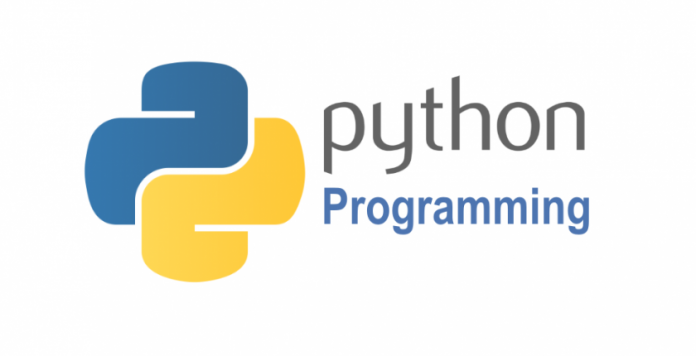Interview Question For Python: Most Asked Interview Question
Interview Question For Python Set 1:
1. What is Python? What are the benefits of using Python?
Python is a programming language with objects, modules, threads, exceptions and automatic memory management. The benefits of pythons are that it is simple and easy, portable, extensible, build-in data structure and it is an open source.
2. What is PEP 8?
PEP 8 is a coding convention, a set of recommendation, about how to write your Python code more readable.
3. What is pickling and unpickling?
Pickle module accepts any Python object and converts it into a string representation and dumps it into a file by using dump function, this process is called pickling. While the process of retrieving original Python objects from the stored string representation is called unpickling.
4. How Python is interpreted
Python language is an interpreted language. Python program runs directly from the source code. It converts the source code that is written by the programmer into an intermediate language, which is again translated into machine language that has to be executed.
5. What is namespace in Python?
A namespace is a naming system used to make sure that names are unique to avoid naming conflicts.
6. What is PYTHONPATH?
It is an environment variable which is used when a module is imported. Whenever a module is imported, PYTHONPATH is also looked up to check for the presence of the imported modules in various directories. The interpreter uses it to determine which module to load. This is Most Asked Interview Question For Python
7. Is indentation required in python?
Indentation is necessary for Python. It specifies a block of code. All code within loops, classes, functions, etc is specified within an indented block. It is usually done using four space characters. If your code is not indented necessarily, it will not execute accurately and will throw errors as well.
8. What is self in Python?
Self is an instance or an object of a class. In Python, this is explicitly included as the first parameter. However, this is not the case in Java where it’s optional. It helps to differentiate between the methods and attributes of a class with local variables.
9. What is pickling and unpickling?
Pickle module accepts any Python object and converts it into a string representation and dumps it into a file by using dump function, this process is called pickling. While the process of retrieving original Python objects from the stored string representation is called unpickling.
10. How will you capitalize the first letter of string?
In Python, the capitalize() method capitalizes the first letter of a string. If the string already consists of a capital letter at the beginning, then, it returns the original string.
11. What are the supported data types in Python?
Python has five standard data types:
- Numbers
- String
- List
- Tuple
- Dictionary
12. What are Python’s dictionaries?
Python’s dictionaries are kind of hash table type. They work like associative arrays or hashes found in Perl and consist of key-value pairs. A dictionary key can be almost any Python type, but are usually numbers or strings.
13. What are split(), sub(), and subn() methods in Python?
These methods belong to Python RegEx ‘re’ module and are used to modify strings.
- split(): This method is used to split a given string into a list.
- sub(): This method is used to find a substring where a regex pattern matches, and then it replaces the matched substring with a different string.
- subn(): This method is similar to the sub() method, but it returns the new string, along with the number of replacements.
14. Define pickling and unpickling in Python.
Pickling is the process of converting Python objects, such as lists, dicts, etc., into a character stream. This is done using a module named ‘pickle’, hence the name pickling.
The process of retrieving the original Python objects from the stored string representation, which is the reverse of the pickling process, is called unpickling.
15. Is indentation optional in Python?
Indentation in Python is compulsory and is part of its syntax.
All programming languages have some way of defining the scope and extent of the block of codes; in Python, it is indentation. Indentation provides better readability to the code, which is probably why Python has made it compulsory.
16. Can we make multi-line comments in Python?
Python does not have a specific syntax for including multiline comments like other programming languages. However, programmers can use triple-quoted strings (docstrings) for making multiline comments as when a docstring is not used as the first statement inside a method, it gets ignored by Python parser.
17. Write a command to open the file c:\hello.txt for writing.
f= open(“hello.txt”, “wt”)
18. What is init in Python?
Equivalent to constructors in OOP terminology, init is a reserved method in Python classes. The init method is called automatically whenever a new object is initiated. This method allocates memory to the new object as soon as it is created. This method can also be used to initialize variables.
19. Which databases are supported by Python?
MySQL (Structured) and MongoDB (Unstructured) are the prominent databases that are supported natively in Python. Import the module and start using the functions to interact with the database.This is Most Asked Interview Question For Python.
20. How is Exception Handling done in Python?
There are 3 main keywords i.e. try, except and finally which are used to catch exceptions and handle the recovering mechanism accordingly. Try is the block of a code which is monitored for errors. Except block gets executed when an error occurs.
The beauty of the final block is to execute the code after trying for error. This block gets executed irrespective of whether an error occurred or not. Finally block is used to do the required cleanup activities of objects/variables.
21. What is the starting point of Python code execution?
As Python is an interpreter, it starts reading the code from the source file and starts executing them.
22. Which module(s) of Python can be used to measure the performance of your application code?
Time module can be used to calculate the time at different stages of your application and use the Logging module to log data to a file system in any preferred format.
23. Does the same Python code work on multiple platforms without any changes?
Yes. As long as you have the Python environment on your target platform (Linux, Windows, Mac), you can run the same code.
24. How can you create a GUI based application in Python for client-side functionality?
Python along with standard library Tkinter can be used to create GUI based applications. Tkinter library supports various widgets which can create and handle events which are widget specific.
25. What is Python Tuples and how is it different from Lists?
Tuples is basically a sequence of elements which are separated by commas and are enclosed in parenthesis.
Lists whereas is a sequence of elements which are separated by commas and are enclosed in brackets. Also, Tuples cannot be updated whereas, in lists, elements can be updated along with their sizes.
Check out the Latest Jobs for Python Developer: Link
Join WhatsApp and Telegram groups for daily job updates: Link
Prepare for Technical Round with Interview Questions: Link
Get insights into HR Interview Questions: Link
Craft a standout resume for Quick shortlisting: Link
Assessment with a Mock Test: Link
Colgate Mock Test with Aptitude and Coding Assessment: Click Here
Understand Colgate Recruitment Process, Test, and Exam Pattern: Link
Explore Global Opportunities for Professionals & Freshers Abroad: Link
TCS NQT 2023 Careers: Graduate Trainee Hiring: Link
PwC Internships 2023: Opportunities in Zurich, Switzerland: Link
Chandrayaan 3: India’s Upcoming Lunar Mission Expectations: Link






















